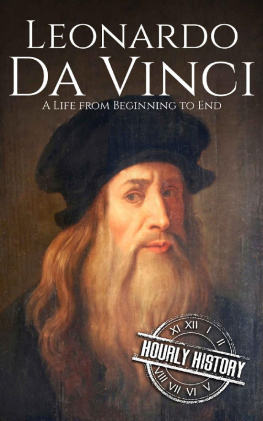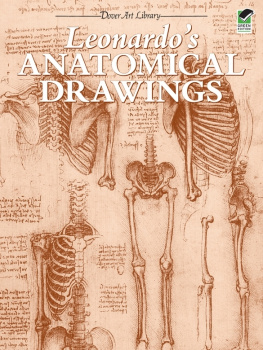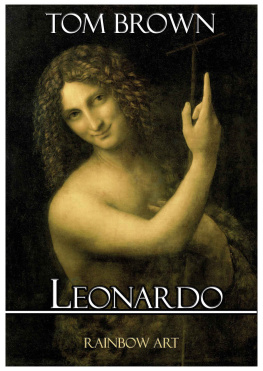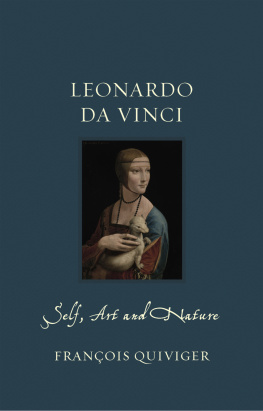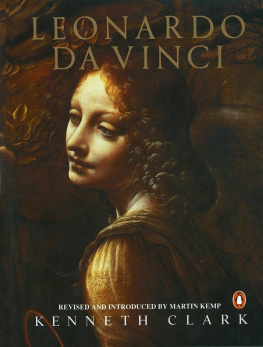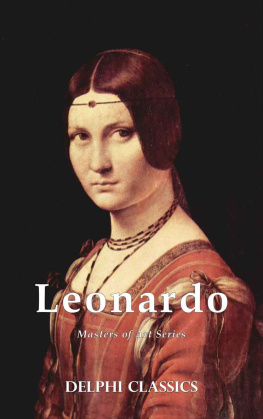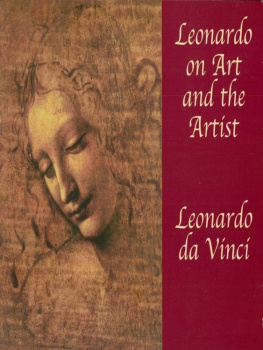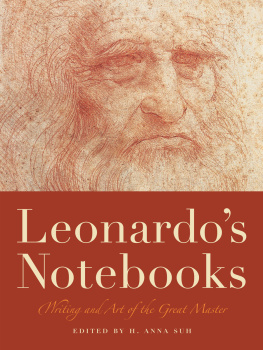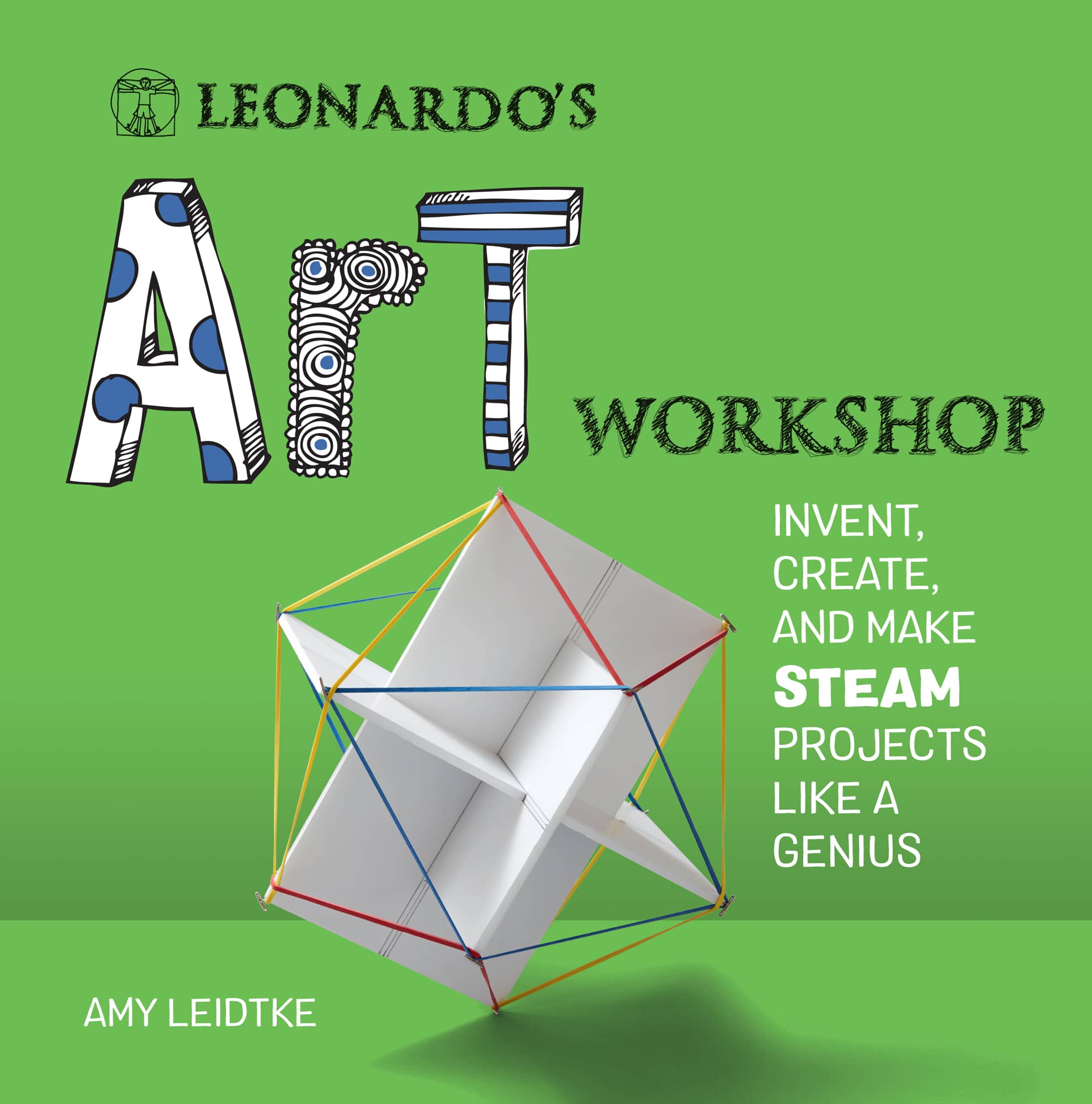This is a model of Leonardos design for what he called an aerial screw (helicopter). He was fascinated with the idea of human flight and might have designed this flying machine for an elaborate pageant or theatrical performanceanother pursuit that he enjoyed.
Sometimes, things that dont seem to start out well turn out to be the best things after all. Leonardo had a very humble start when he was born in the small town of Vinci, in Tuscany, Italy, in 1452. His father, Piero, a well-off legal notary, didnt marry Leonardos mother, a peasant named Caterina. Not only was Leonardo not expected to follow in his fathers footsteps and become a notary, but that kind of education and career were not available to him.
In fact, he would have very little formal education at all. But he got something better for a boy full of curiosity. By the time he was fourteen, Leonardos talent as an artist was already evident, and his father found him a position as an apprentice, working in the studio of the painter and sculptor Andrea del Verrocchio in the great city of Florence.
Leonardo didnt often get to show his love of animals in his paintings, but he did in this portrait of Cecilia Gallerani, The Lady with the Ermine, 1496.
Florence during the Renaissance was the place for exchanging ideas about art, architecture, and engineering. Artists and writersall the creative minds of the citystopped by Verrocchios studio to look, talk about art, exchange news, and discuss ideas. Young Leonardo could listen in and, in time, take part in those discussions, getting to know all the great thinkers of the day. It was the perfect place for his genius as an artist and inventor to blossom and his education to begin.
For Leonardo, everything was connected. Art wasnt just about applying paint with a brush. In studying painting, he studied the landscape. In studying the landscape, he taught himself about perspectivehow things seem to disappear in the distance, a form of mathematics that allows an artist to create a three-dimensional scene on a flat painting surface. By studying weather and rivers, he taught himself about wind and water flow, buoyancy, gravity, and energyin other words, physics. In studying the life cycle of trees, he pioneered new ideas about ecological systems. And in studying rocks, he learned about geology and how the Earth was formed. Leonardo included depictions of rivers and rock formations in many of his paintings, and they are so true to the originals that geologists looking at them today can identify each kind of rock.
The hill town of Vinci where Leonardo was born.
The art historian Kenneth Clark called Leonardo the most relentlessly curious man in history, and that just might be true. He was fascinated by nature, he loved knowing not just how things work but why they work, and he loved the world. He was curious about everything in it. For Leonardo, to study and understand one subject meant comparing it with all the other subjects that he had investigated. And as his learning advanced in one field, he adjusted his notes and conclusions in the other fields as well.
He began his studies as a painter, but during his long life, Leonardos curiosity, diligence, and genius made him a master painter, sculptor, architect, designer, scientist, engineer, and inventor. There was no separation between art, science, and mathematics in his mind. Does this sound like STEAM? You bet it does. More than 500 years ago, Leonardo knew that the fields of science, technology, engineering, art, and mathematics (STEAM) are all connected, and on the pages of this book, well help you, too, to see how art, math, and science are all connected.
On these pages from one of Leonardos notebooks, he sketched clouds, plants, a rearing horse, a man in profile, engineering ideas, and moreproof of a curious and wide-ranging mind on a single spread of a notebook.
CHAPTER 1
COLOR
THE SCIENCE OF COLOR
Why do we see different colors, and where do they come from?
Leonardo looked at everything he did from every possible angle. As a painter, he studied the geometry of light rays and the nature of shadows. As an artists apprentice in the 1460s, he learned to grind glass lenses and was fascinated with using them to focus light, which he recognized as a form of energy. Later, he also experimented with refraction (bending light by passing it through a prism) and watched the magical results. He wrote about his experiments in his notebooks, but he never published his results. Credit for the discovery of the color in light would go to another scientist, Sir Isaac Newton in England, who published his own studies some 200 years later.
Leonardo recorded notes on his studies of light rays throughout his notebooks.
There are light waves all around, but the only ones humans can see are those in the visible spectrum. The full spectrum of light waves includes infrared rays, visible light, ultraviolet rays, and X-rays. Human eyes are only sensitive to the range of wavelengths between 780 and 380 nanometersour visible spectrum. There may be far more colors that we cant see. Ultraviolet, for instance, is invisible to our eyes, but bees can see it, and they use it to detect nectar.
How long is a nanometer?
Nanometer (abbreviation nm) means dwarf meter. Its a metric unit of length equal to one-billionth of a meter (0.000000001 m). Try measuring that with a ruler!
Sir Isaac Newton experimented with prisms, but he also experimented with color wheels. In fact, he invented the color wheel. First, he divided white sunlight into a spectrum of red, orange, yellow, green, cyan, and blue beams. Then, he joined the two ends of the spectrum together to make a circle, or wheel, with the progression of colors going around it. When he spun the wheel, something interesting happened. (See the project on the next page.)
This is a replica of Newtons color wheel.
VISIBLE AND INVISIBLE LIGHT


